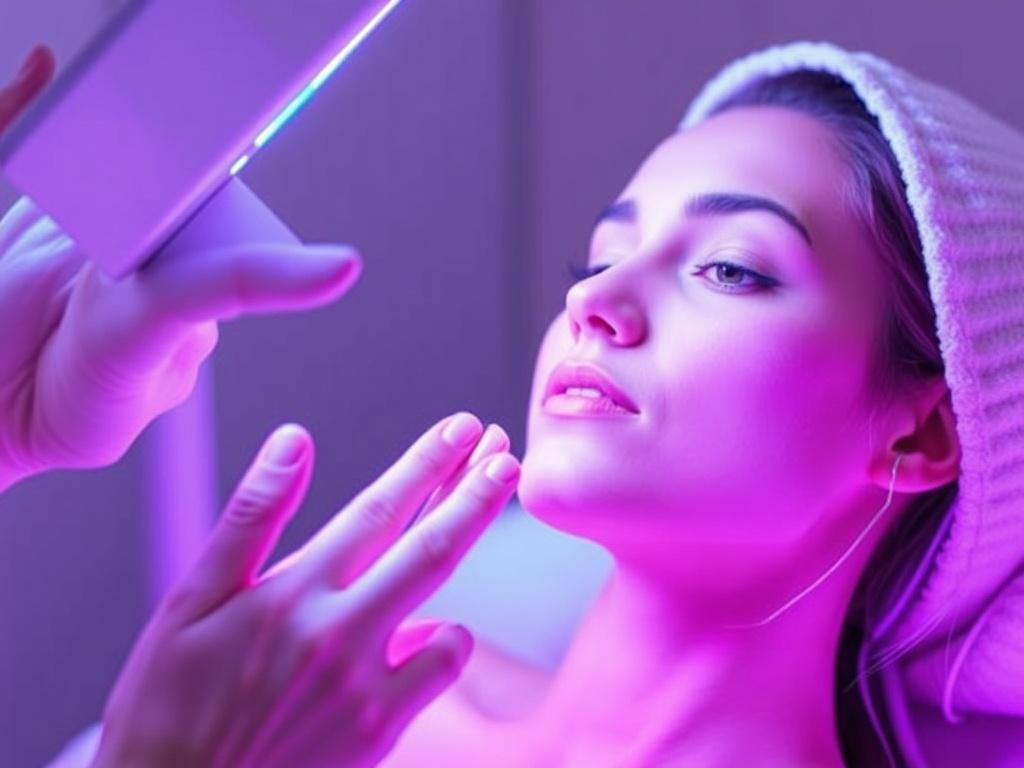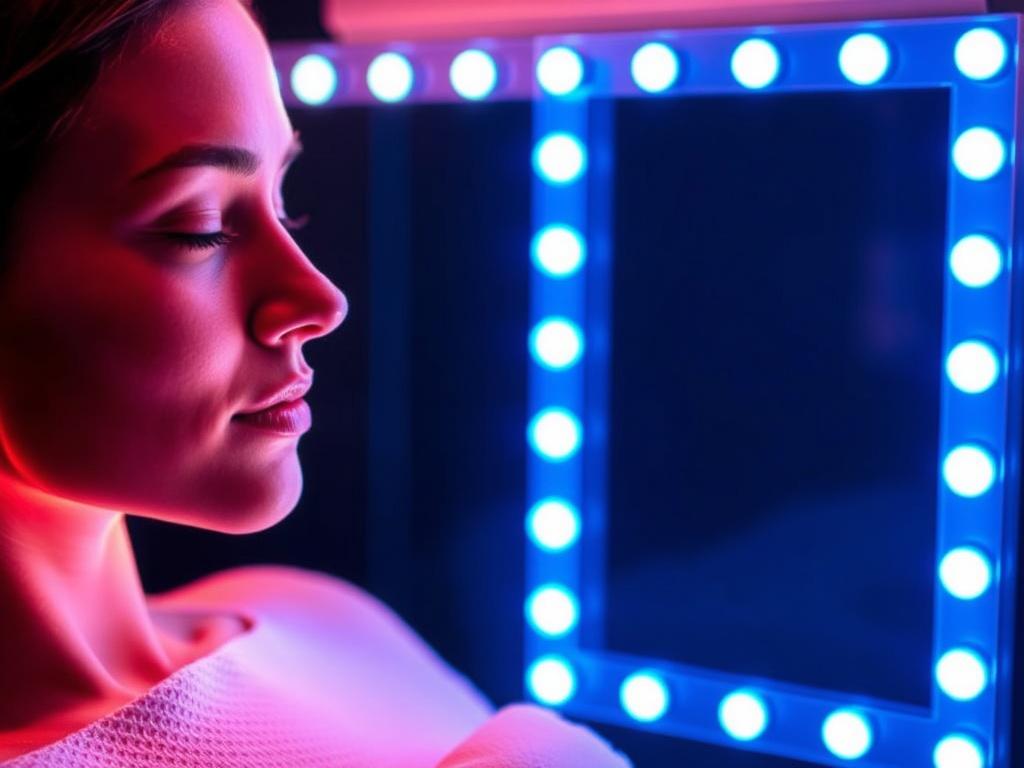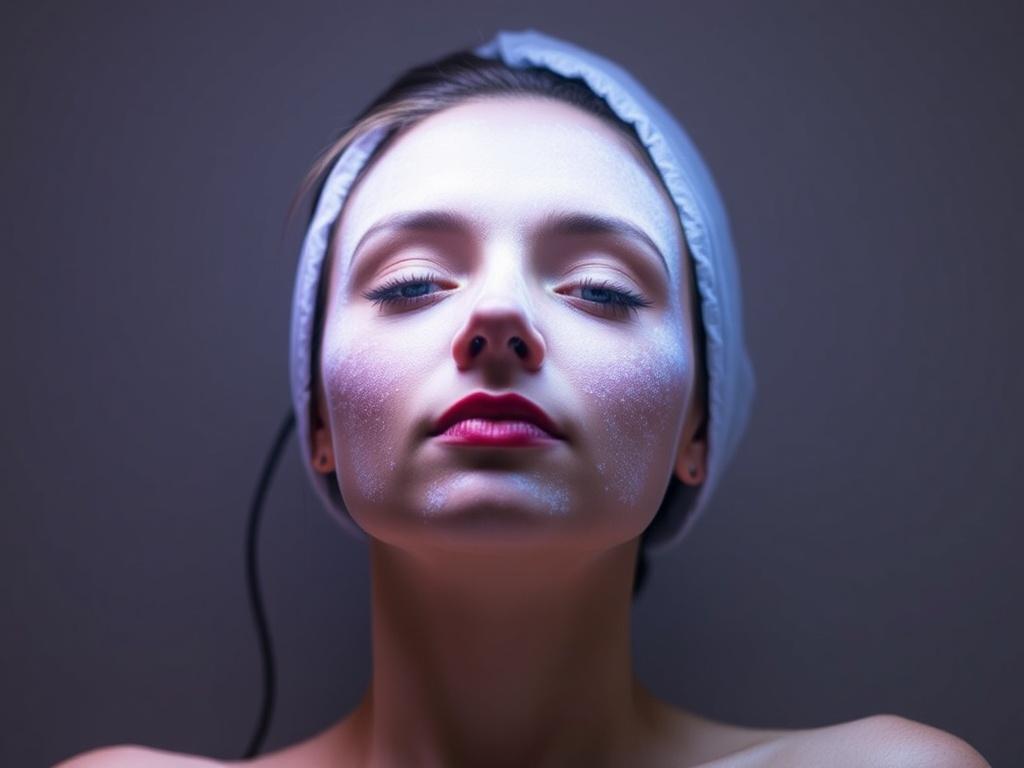Содержание статьи
- 1 What is LED Light Therapy for Skin?
- 2 How Does LED Light Therapy Work?
- 3 The Different Colors of LED Light and Their Skin Benefits
- 4 What Skin Conditions Can LED Light Therapy Help With?
- 5 Scientific Evidence: Does LED Light Therapy Really Work?
- 6 At-Home Devices vs. Professional Treatments
- 7 How to Use LED Light Therapy for Skin at Home
- 8 Common Myths About LED Light Therapy for Skin
- 9 Is LED Light Therapy Safe?
- 10 Who Should Consider LED Light Therapy?
- 11 What to Expect: Realistic Outcomes
- 12 Frequently Asked Questions about LED Light Therapy for Skin
- 13 Future of LED Light Therapy in Skincare
- 14 Summary of Pros and Cons of LED Light Therapy for Skin
- 15 Conclusion
LED light therapy has become a buzzword in the world of skincare, promising a non-invasive, painless method to rejuvenate and heal the skin. From celebrity endorsements to a flood of devices hitting the consumer market, it’s hard not to be curious about whether LED light therapy for skin truly works or if it’s just another fleeting trend. In this comprehensive article, we’ll dive deeply into the science behind LED light therapy, explore its practical benefits, debunk myths, and guide you on how to incorporate it into your skincare routine safely and effectively.
What is LED Light Therapy for Skin?
LED, or Light Emitting Diode, light therapy uses specific wavelengths of light on the skin to trigger natural cellular processes. Different colors of light penetrate the skin at various depths and target different concerns. Popular LED therapies include red, blue, and near-infrared light, each with unique skin benefits.
Originally developed by NASA for plant growth experiments and wound healing in space, LED light therapy found its way into dermatology and cosmetic treatments because of its ability to stimulate collagen and reduce inflammation without causing damage.
When you hear “LED light therapy for skin,” think of it as a gentle, radiant energy source that prompts your skin cells to activate healing, repair, and regeneration mechanisms—without UV rays or harmful side effects.
How Does LED Light Therapy Work?
When you shine LED light of a specific wavelength onto the skin, it penetrates tissue and stimulates mitochondrial activity in cells. Mitochondria are the “powerhouses” of cells, generating energy in the form of ATP (adenosine triphosphate), which is vital for cellular functions such as repair and renewal.
Here’s a quick breakdown of the process:
- Light Penetration: Different wavelengths penetrate skin at different depths—with red light reaching the deeper dermis, blue light affecting the epidermis more, and near-infrared penetrating further.
- Cell Stimulation: The light energy is absorbed by chromophores in the cells, increasing ATP production and boosting cellular metabolism.
- Biological Response: This encourages collagen and elastin production, reduces inflammation, improves blood flow, and kills acne-causing bacteria, depending on the wavelength used.
In essence, LED light therapy acts like a gentle energy boost for skin cells, encouraging natural healing processes and improving the overall appearance of the skin.
The Different Colors of LED Light and Their Skin Benefits
Not all LED lights are created equal. Each color targets different skin concerns, making LED light therapy customizable for various skin needs. Here are the most commonly used colors and their benefits:
| LED Color | Wavelength (nm) | Primary Skin Benefits |
|---|---|---|
| Red Light | 620 – 750 nm | Boosts collagen & elastin production, reduces fine lines and wrinkles, improves circulation, heals skin damage |
| Blue Light | 405 – 420 nm | Kills acne-causing bacteria (P. acnes), reduces inflammation, prevents breakouts |
| Near-Infrared Light | 700 – 1200 nm | Penetrates deeply to reduce inflammation, promotes wound healing, eases muscle pain and stiffness |
| Green Light | 520 – 560 nm | Brightens skin, reduces pigmentation and age spots, helps with redness |
Using different combinations of LED colors in therapy can target multiple skin concerns at once, making this treatment versatile for overall skin health.
What Skin Conditions Can LED Light Therapy Help With?

LED light therapy has been studied and used to treat a variety of skin conditions, from cosmetic improvements to medical-grade therapies. Here’s a list of common skin issues that may respond well to LED light therapy:
- Acne: Blue light targets acne-causing bacteria, while red light reduces inflammation and speeds healing of acne scars.
- Anti-Aging: Red and near-infrared light stimulate collagen, reducing wrinkles, fine lines, and sagging.
- Psoriasis & Eczema: LED helps calm inflammation and soothe irritated skin.
- Wound Healing: Near-infrared light accelerates the repair of skin damage, cuts, and scars.
- Hyperpigmentation: Green light can diminish the appearance of dark spots and uneven skin tone.
While LED light therapy shines in skin rejuvenation and inflammatory conditions, it is not a one-for-all cure and does best when tailored to the individual’s skin type and issues.
Scientific Evidence: Does LED Light Therapy Really Work?
The big question remains: does LED light therapy for skin actually work? The science behind it is promising but varies depending on the condition being treated and the specific therapy parameters used.
Numerous peer-reviewed clinical studies support the effectiveness of LED therapy, especially with red and blue light, for certain skin benefits.
Some key findings include:
| Skin Concern | Study Results | References |
|---|---|---|
| Acne Vulgaris | Significant reduction of inflammatory lesions and acne severity after several weeks of combined red and blue LED treatments. | Barolet et al., 2009; Gold et al., 2011 |
| Wrinkles & Skin Elasticity | Increase in collagen density and improvement in fine lines and skin texture with red and near-infrared light therapy. | Avci et al., 2013; Lee et al., 2007 |
| Wound Healing & Scar Reduction | Accelerated tissue repair and reduced scar formation with near-infrared LED therapy. | Hopkins et al., 2015; Huang et al., 2016 |
Overall, the evidence points to LED light therapy as a safe and effective option for improving certain skin problems when performed correctly and consistently.
At-Home Devices vs. Professional Treatments
One reason LED light therapy has exploded in popularity is the availability of affordable, user-friendly LED devices for home use. These range from handheld flashlights to flexible masks covering the whole face.
However, there are important distinctions between at-home devices and treatments done by dermatologists or licensed estheticians:
| Aspect | At-Home LED Devices | Professional LED Treatments |
|---|---|---|
| Light Intensity | Generally lower-powered for safety | Higher intensity for deeper penetration and faster results |
| Session Duration | Typically 10-30 minutes per session | 15-45 minutes, often combined with other treatments |
| Cost | One-time purchase ranging from $50 to $500 | Per session costs can range from $75 to $250 or more |
| Customization | Limited color choices and settings | Tailored wavelengths, power, and treatment plans |
While professional treatments may deliver faster and more dramatic results, consistent use of at-home LED light therapy machines can still provide benefits, especially for maintenance and early intervention.
How to Use LED Light Therapy for Skin at Home
If you’re considering investing in LED light therapy for skin at home, here’s a simple step-by-step guide to ensure you get the best results safely:
- Choose the Right Device: Pick an FDA-cleared device with appropriate wavelengths for your skin concerns.
- Cleanse Your Skin: Remove makeup and dirt to maximize light absorption.
- Wear Eye Protection: Use goggles or keep eyes closed to avoid discomfort.
- Follow Recommended Treatment Times: Usually 10-20 minutes per session, 3-5 times a week.
- Maintain Consistency: Results appear gradually over weeks or months.
- Combine with Skincare: Follow up with serums or moisturizers suitable for your skin type.
Tips to Optimize LED Light Therapy Efficacy
- Do not use LED therapy on open wounds or during active skin infections.
- Avoid overuse; excessive exposure can cause skin irritation.
- Pair treatments with sun protection during the day.
- Consult a dermatologist if you have photosensitive conditions.
Common Myths About LED Light Therapy for Skin

With rising popularity, LED light therapy has also been surrounded by misconceptions. Let’s clear up some common myths:
Myth 1: LED Light Therapy Can Burn Your Skin
LED light therapy does not generate UV rays or heat harmful enough to burn the skin. It is generally considered painless and safe when used per instructions.
Myth 2: Results Are Instant
Unlike makeup or topical treatments, LED light therapy works gradually by stimulating natural processes, so results usually take several weeks of consistent use.
Myth 3: LED Light Therapy Can Replace All Skincare
While it’s a valuable tool, LED light therapy is best used as a complement to a healthy skincare routine, including cleansing, moisturizing, and sun protection.
Myth 4: It Works Equally for Everyone
Individual results vary based on skin type, condition severity, and treatment compliance; not everyone will experience the same benefits.
Is LED Light Therapy Safe?
Safety is always a big concern when trying new skin treatments. Fortunately, LED light therapy is viewed as one of the safest skin therapies available.
– No UV radiation is involved, so it doesn’t increase skin cancer risk.
– Treatments are non-invasive, painless, and require no downtime.
– Side effects are rare but may include mild redness, dryness, or temporary irritation.
– People with photosensitivity disorders or on certain medications should consult healthcare providers before use.
Practicing proper usage guidelines makes LED light therapy a safe and gentle addition to skincare.
Who Should Consider LED Light Therapy?
LED light therapy is ideal for those seeking:
- Non-invasive anti-aging solutions without needles or lasers
- A natural way to calm acne and reduce breakouts
- Improved skin texture, tone, and radiance
- A complementary therapy alongside other skin treatments
- Maintenance treatments after clinical procedures like microneedling
However, individuals with serious skin conditions or specific medical history should discuss this with a dermatologist first.
What to Expect: Realistic Outcomes
While many people report glowing, healthier skin after LED light therapy, it’s important to manage your expectations. Here’s what you can typically expect:
| Timeline | Likely Skin Improvements |
|---|---|
| First 2-4 Weeks | Reduced redness and inflammation, clearer skin, slight improvement in texture |
| 6-8 Weeks | Smoother skin, fewer fine lines beginning to fade, brighter complexion |
| 3-6 Months | Visible reduction in wrinkles and pigmentation, improved skin firmness |
Consistency and combining LED therapy with good skincare habits maximize results.
Frequently Asked Questions about LED Light Therapy for Skin

Q: Can LED light therapy help with dark spots?
A: Yes, green LED light has shown promising results in reducing hyperpigmentation and evening out skin tone.
Q: How often should I use LED light therapy?
A: Generally, 3-5 sessions per week at home, with each session lasting 10-20 minutes is ideal, but this can vary by product.
Q: Is LED light therapy painful?
A: No, it is painless and non-invasive. Some might feel mild warmth, but it’s usually comfortable.
Q: Can men use LED light therapy?
A: Absolutely! LED skincare is beneficial for all genders.
Q: Can I use LED light therapy with retinol or other active ingredients?
A: Yes, combining LED therapy with topical treatments can enhance skin rejuvenation, but patch test and introduce products gradually.
Future of LED Light Therapy in Skincare
As technology advances, LED light therapy is evolving beyond basic treatments. Researchers are exploring:
- Enhanced devices with multiple wavelengths for tailored skincare
- Integration with wearable technology for on-the-go treatments
- Combinations with other treatments like microcurrent or ultrasound
- Use in treating related conditions including hair loss and oral mucosa issues
Ongoing studies aim to optimize protocols, making LED light therapy more accessible and effective worldwide.
Summary of Pros and Cons of LED Light Therapy for Skin
| Pros | Cons |
|---|---|
| Non-invasive and painless | Results are gradual, require consistent use |
| Safe for most skin types | Professional treatments can be costly |
| Targets multiple skin concerns | At-home devices vary widely in quality |
| Minimal to no downtime | May not work for severe or complex skin conditions |
Conclusion
LED light therapy for skin is more than just a passing trend—it is a scientifically supported, safe, and versatile option that can enhance skin health by harnessing the power of light. Whether addressing acne, reducing signs of aging, or promoting healing, LED therapy offers a non-invasive, painless way to support your skin’s natural processes. While it may not replace more aggressive medical treatments, its ease of use and minimal side effects make it an attractive addition to any skincare routine. Success hinges on consistency, proper device usage, and realistic expectations. So if you’re looking for a gentle yet effective way to improve your skin’s appearance, LED light therapy might just shine its light on your path to healthier, glowing skin.

